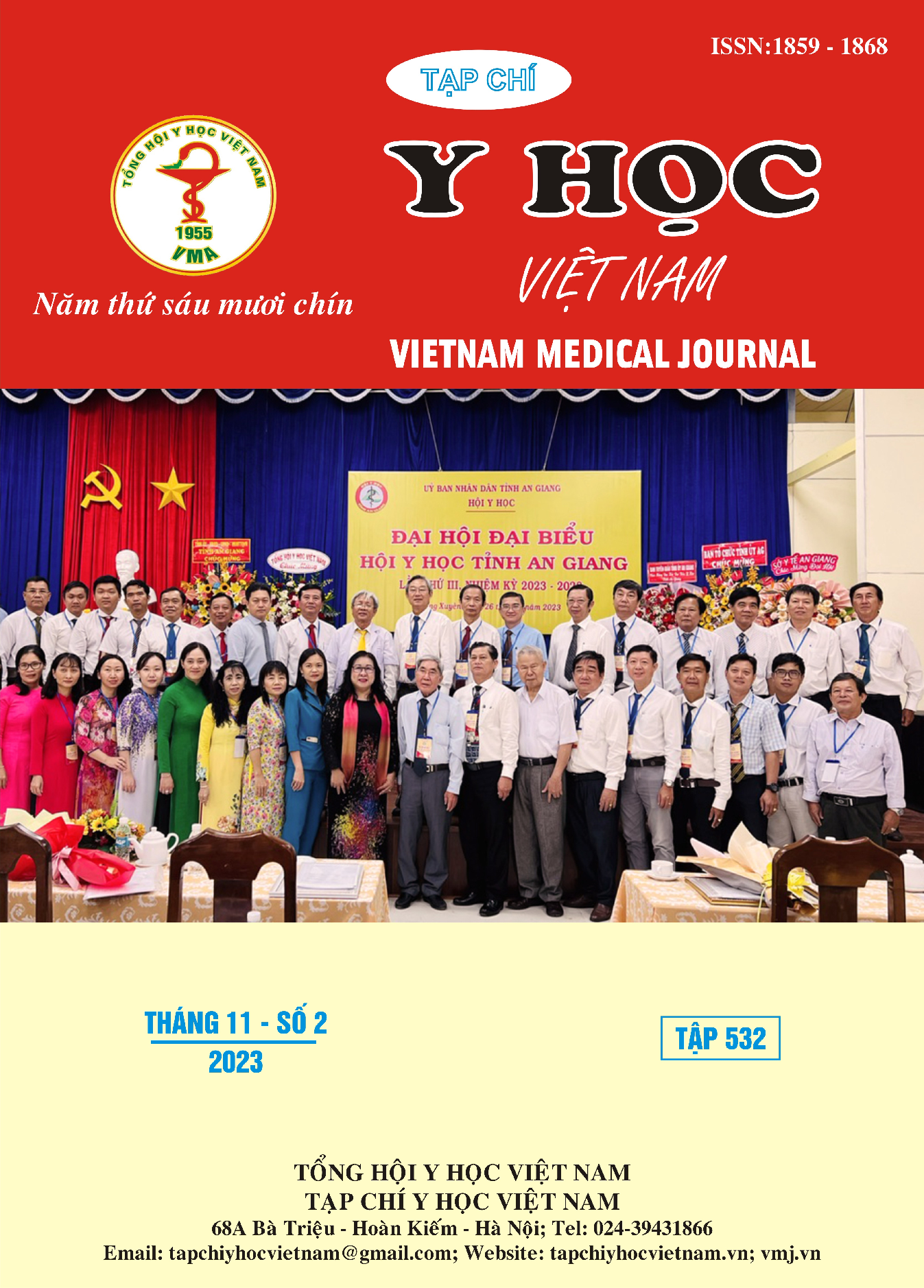EVALUATE THE RESULTS OF INTRACRANIAL PRESSURE MEASUREMENT IN BRAIN PARENCHYMA IN PATIENTS WITH SEVERE BRAIN INJURY IN BAC NINH GENERAL HOSPITAL
Main Article Content
Abstract
Objective: To evaluate the result of intracranial pressure measurement in brain paracranial for 41 patients with severe traumatic brain injury in Bac Ninh general hospital. Study methods: The descriptive prospective was conducted on 41 patients with severe traumatic brain injury who were diagnosed and treated at Bac Ninh general Hospital. The intracranial pressure of all 41 patients was measured by intraparenchymal devices. The treatment was based on monitoring the clinical status, medical imaging, intracranial pressure. Treatment included intensive care, surgery to remove hematoma, decompressive hemicraniectomy (no intracranial hematoma, high intracranial pressure, ineffective intensive treatment). Result of treatment was assessed when patients were discharged (being alive, being dead, getting complications), after being discharged for more than 3 months (GOS). Results: Among 41 patients: 37 males, 4 females. The lowest age was 19 years old, the highest age was 73 years old. The intracranial pressure of all the patients was measured by. Complication: subdural hematoma in one case. Surgery to remove hematoma was performed in 4 cases, decompressive hemicraniectomy was performed in 1 case and internal treatment was applied in 36 cases. Results when patients were discharged: 6 patients were dead and 35 patients were alive. Causes of death: mismanagement of intracranial pressure in 4 cases. The mortality rate was different betwwen the group of patients with ICP >20 mmHg and ICP ≤ 20mmHg (p=0,035). ICP in the group of dead patients is higher than in the alive group. Conclusions: Measuring intracranial pressure by intraparenchymal devices is a simple technique, safe, less complicated, effective in mornitoring and treating patients with severe traumatic brain injury.
Article Details
Keywords
Severe traumatic brain injury, treatment, surgery, Intracranial pressure.
References
2. Trần Trung Kiên (2011) Đánh giá kết quả đo áp lực nội sọ qua nhu mô não trong những bệnh nhân chấn thương sọ não nặng tại bệnh viện Việt Đức năm 2011. Luận văn tốt nghiệp bác sỹ nội trú các bệnh viện, đại học Y Hà Nội.
3. Abou EL Fadl MH, O,Phelan KH et al (2017). Management of traumatic brain injury: an update. Neurol Clin 35(4):641-653.
4. Cooper DJ, Rosenfel JV, Murray L et al (2011). Decompressive craniectomy in diffuse traumatic brain injury. N Engl J Med 364;16: 1494-502.
5. Miller JD, Butterworth JF, Gudeman SK et al (1981). Further experience in the mannagement of severe head injury. J Neurosurg 54: 289-299.
6. Palmer S, Bader M, Qureshi A et al (2001). The impact of outcomes in a community hospital setting of using the AANS traumatic brain injury guidlines. J Trauma 50(4):657-662.
7. Vella MA, Crandall ML, Patel MB et al (2017). Acute management of traumatic brain injury. Surg Clin North Am 97(5): 1015-1030.


